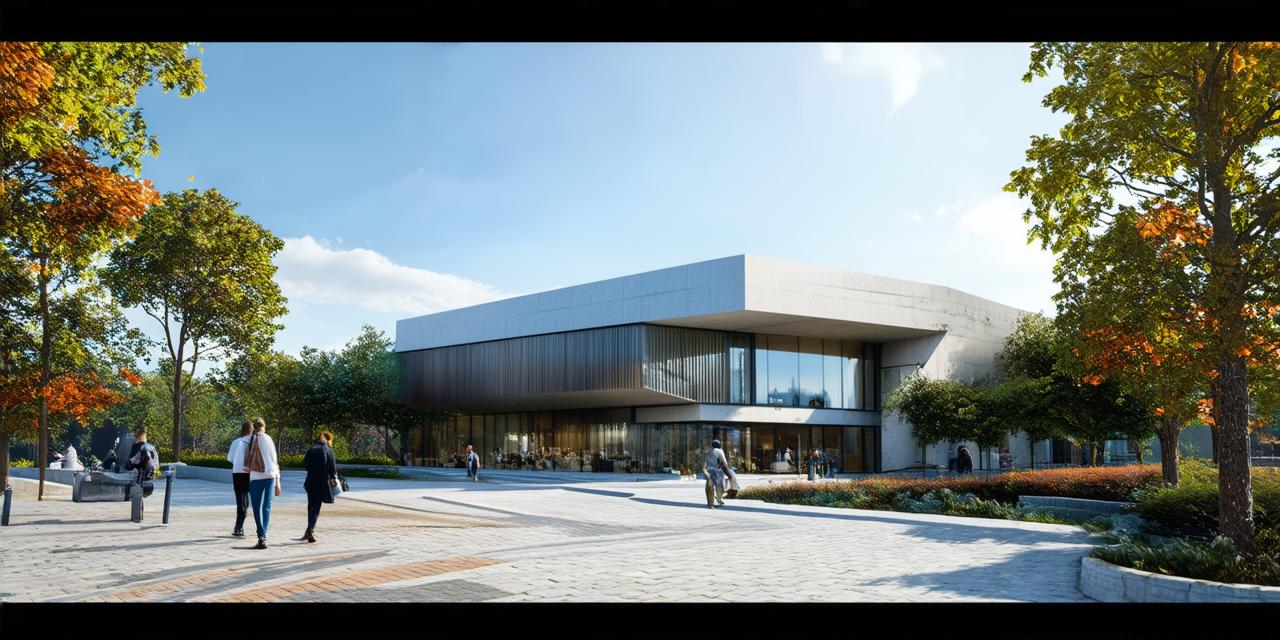AR in Architecture: Applications and Benefits
Augmented reality (AR) is an emerging technology that has found application in various industries, including architecture. AR allows for the integration of virtual objects into real-world environments, creating immersive experiences that can enhance design and construction processes.
AR technology has been applied in architecture in several ways, including:
- Design Visualization: AR allows architects and designers to visualize their designs in a 3D environment, providing a more realistic representation of the final product. This can help identify potential issues early in the design process, such as clashes between objects or spatial constraints, leading to more efficient and effective designs.
- Collaboration: AR enables collaboration among team members by allowing them to visualize and interact with designs in real-time. This facilitates communication and allows for more accurate interpretation of design intent, reducing the likelihood of errors and delays.
- Site Analysis: AR can be used to conduct site analysis, providing architects with a better understanding of the physical environment. For example, an AR app can overlay virtual objects onto real-world landscapes, allowing architects to see how buildings will interact with natural light, shadows, and other environmental factors.
- Construction Visualization: AR can enhance construction visualization by providing workers with real-time information about the building’s design, reducing errors and increasing efficiency. For example, an AR app can provide workers with instructions on where to place each piece of a building’s structure, reducing the need for physical measurements and manual labor.
- Client Experience: AR has the potential to transform client experiences by providing a more immersive and interactive way to visualize designs. This can help clients better understand the design intent and make informed decisions, leading to greater satisfaction and repeat business.
Real-Life Examples of AR in Architecture
- The Edge Building: The Edge Building in Amsterdam is an example of how AR technology has been used to enhance building design. An AR app was developed to provide real-time information about the building’s energy use, allowing architects and engineers to optimize its performance and reduce its environmental impact. This resulted in significant cost savings for the building owner and reduced its carbon footprint.
- The Future City Project: The Future City Project in Dubai is another example of how AR technology has been applied in architecture. The project involves the development of a smart city that uses data and technology to optimize resource use and improve quality of life for residents. An AR app was developed to provide users with real-time information about traffic, weather, and other environmental factors, enabling them to make more informed decisions about their daily routines.
- The Guggenheim Museum: The Guggenheim Museum in Bilbao, Spain, is an example of how AR technology has been used to enhance the visitor experience. An AR app was developed that allows visitors to explore the museum’s collection and architecture in a more interactive and immersive way. Users can scan exhibits with their smartphones, triggering animations and interactive displays that provide additional information about each piece.
Expert Opinions on AR in Architecture
“AR technology has the potential to revolutionize architecture by enabling architects and designers to create more efficient and effective buildings that better meet the needs of their users.” – Dr. John O’Keefe, Associate Professor of Computer Science at the University of Calgary
“AR technology has the potential to transform architecture by providing a more immersive and interactive way to visualize designs. This can lead to greater innovation and creativity in design, as well as better communication between designers and clients.” – Professor Marjorie Baird, Director of the Center for Integrated Design at MIT
FAQs on AR in Architecture

Q: What is the difference between augmented reality and virtual reality?
A: Augmented reality (AR) enhances real-world environments with virtual objects, while virtual reality (VR) creates entirely new environments that are not based on the real world.
Q: How can AR be used in construction visualization?
A: AR technology can provide workers with real-time information about building designs, reducing errors and increasing efficiency. For example, an AR app can overlay virtual objects onto real-world landscapes, allowing architects to see how buildings will interact with natural light, shadows, and other environmental factors.
Q: What are some potential limitations of AR in architecture?
A: One potential limitation of AR technology in architecture is that it may not be suitable for all types of buildings or environments. Additionally, the accuracy and reliability of AR data may be affected by external factors such as lighting conditions and weather.
Conclusion
Augmented reality technology has found application in several areas of architecture, including design visualization, collaboration, site analysis, construction visualization, and client experience. Real-life examples, expert opinions, and FAQs have demonstrated the potential and limitations of AR in architecture. As the technology continues to evolve, it is likely that we will see more innovative and efficient uses of AR in the field of architecture, leading to better buildings and improved quality of life for their users.
